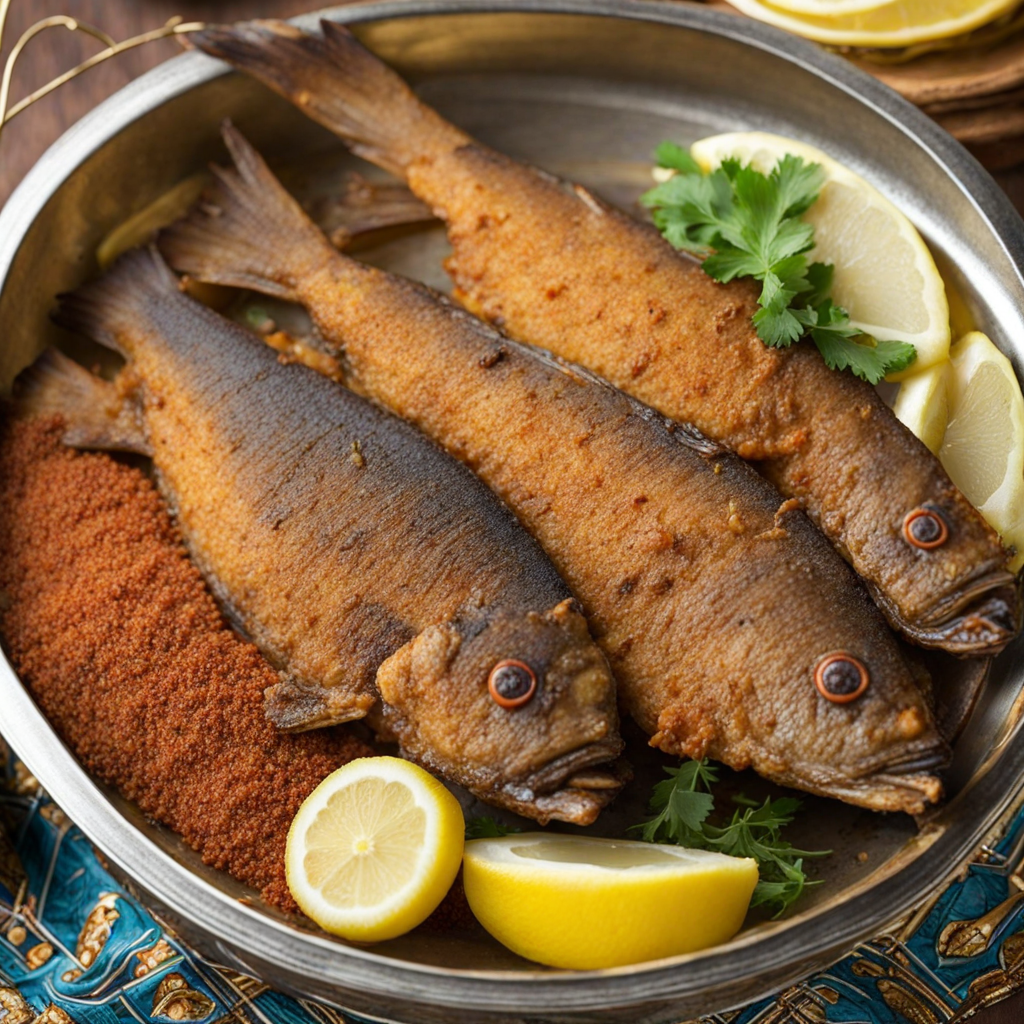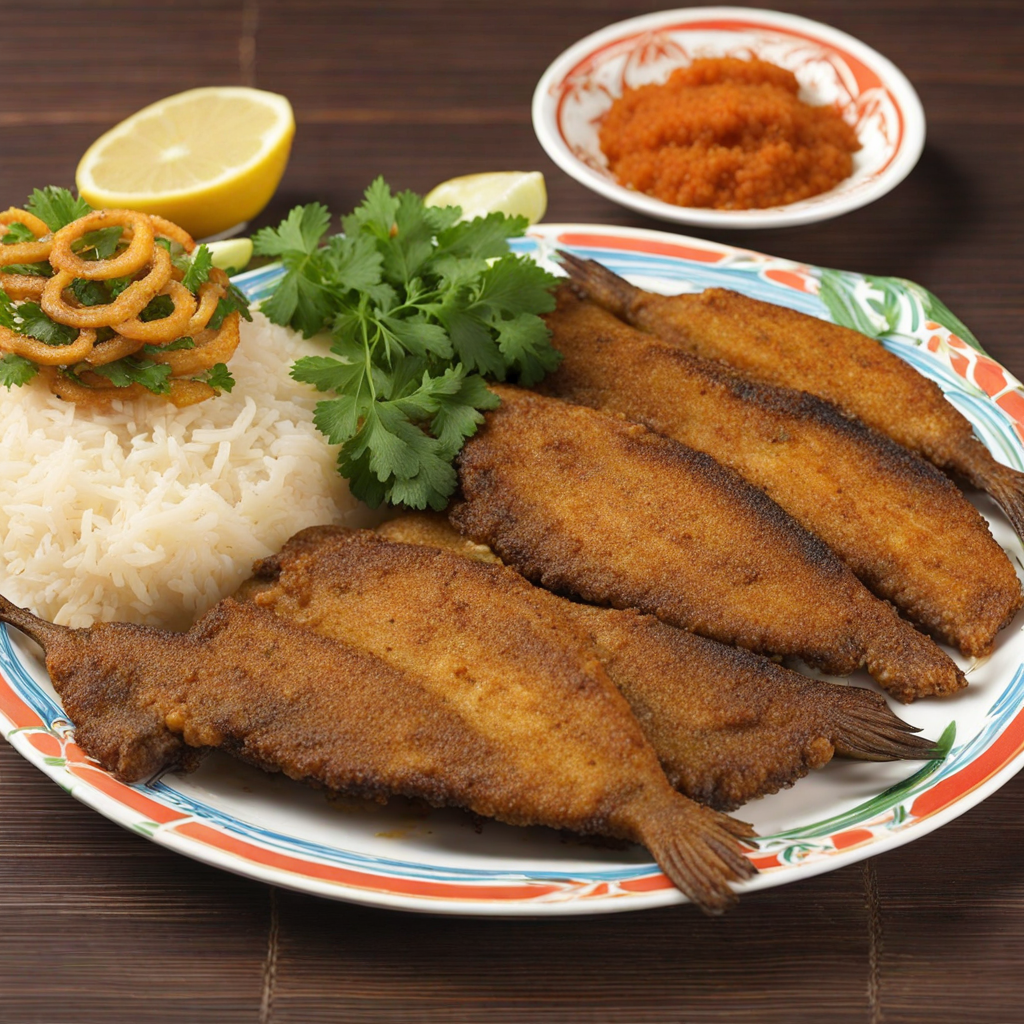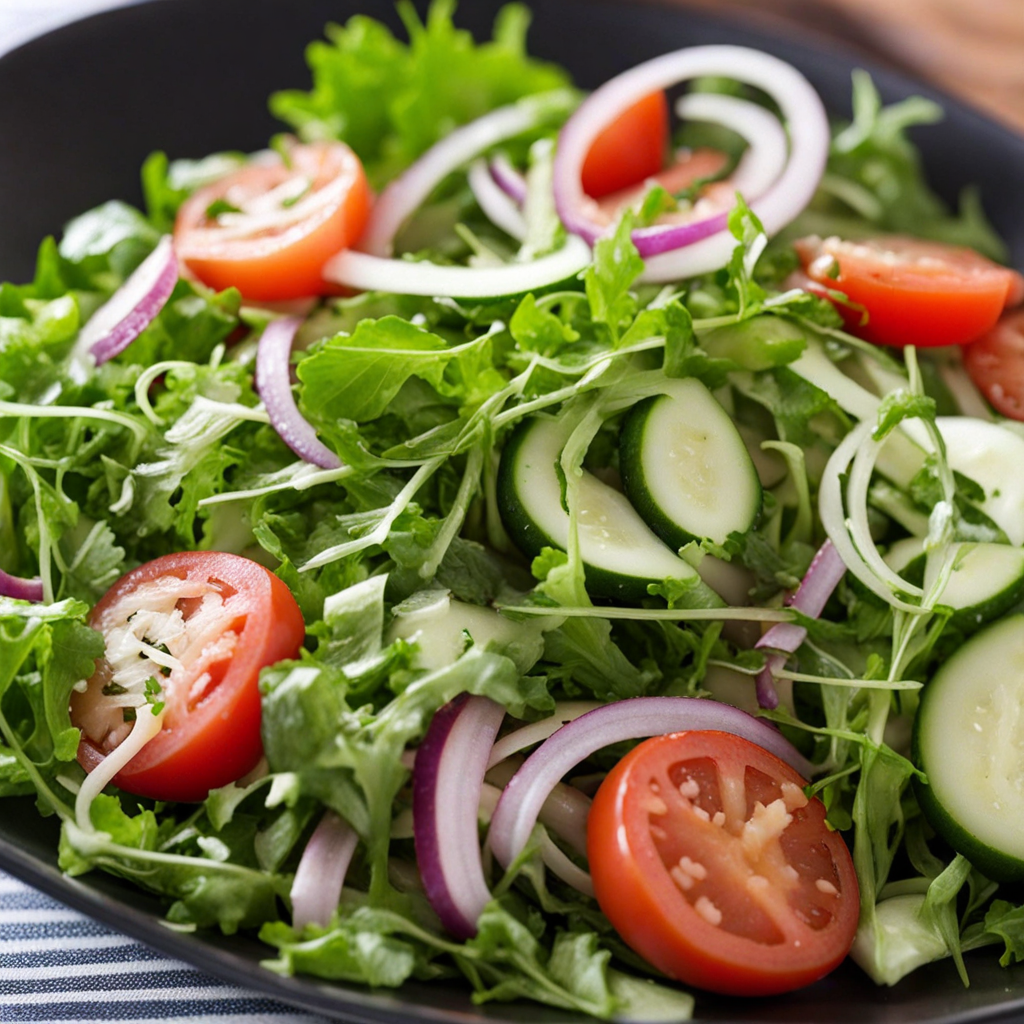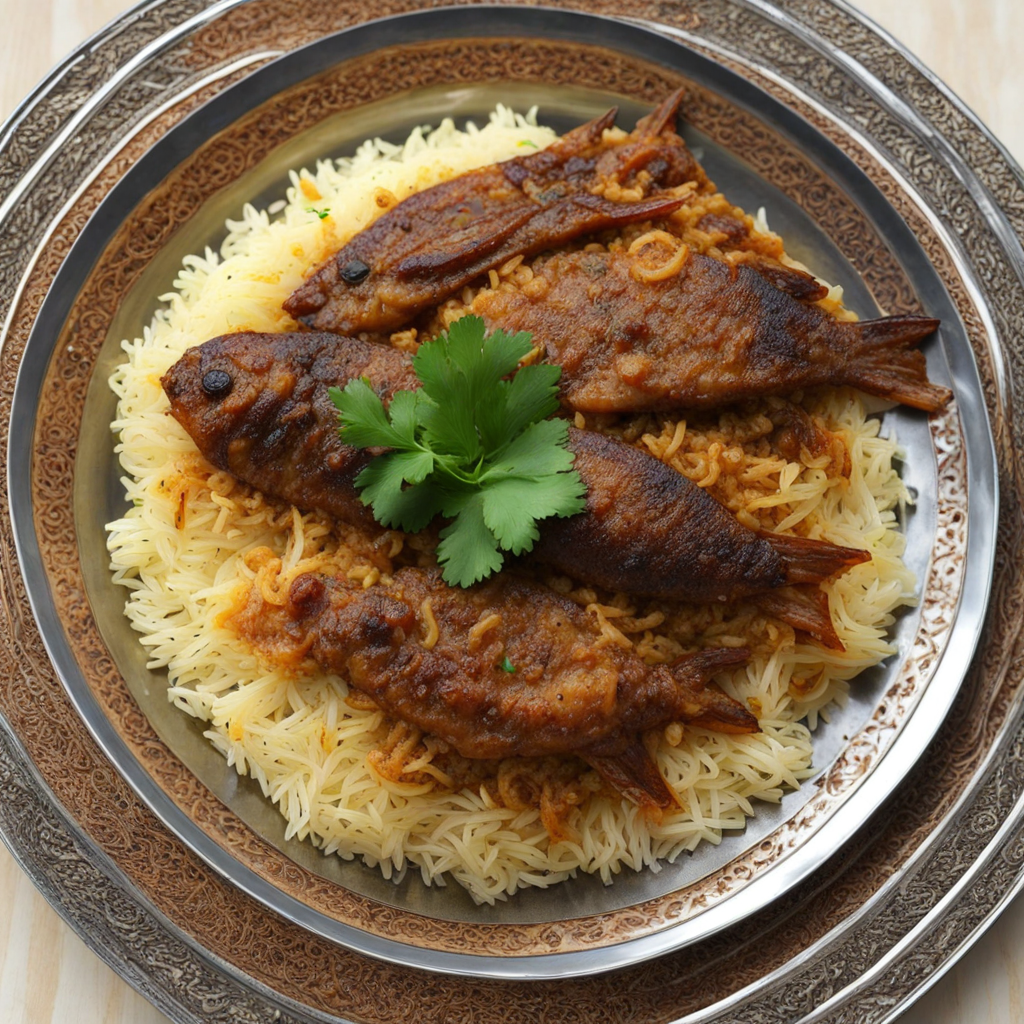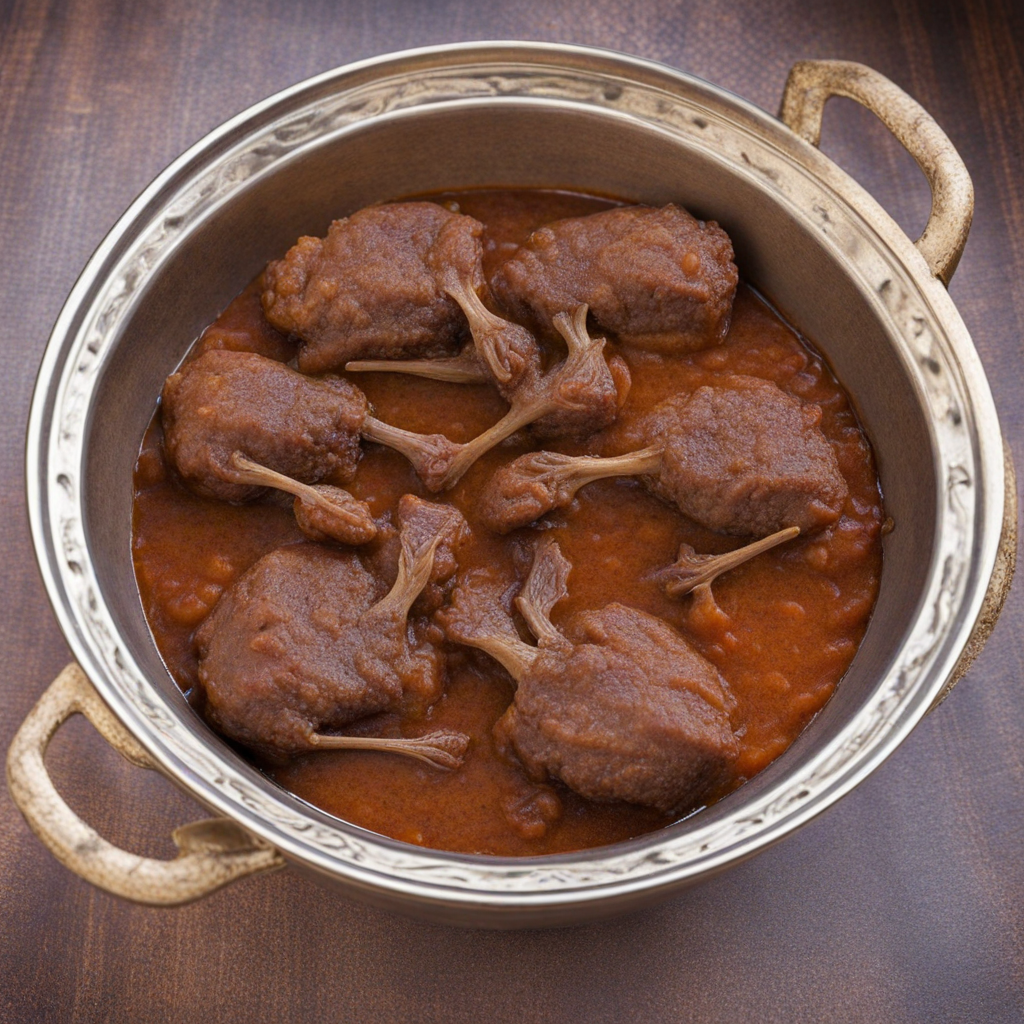Kajaik
Kajaik is a traditional Sudanese dish that embodies the rich culinary heritage of the country. This delightful meal is primarily made from fish, often the Nile perch, which is known for its firm texture and mild flavor. The fish is typically marinated with a blend of spices and herbs, including garlic, coriander, and chili, which not only enhance its taste but also reflect the vibrant flavors of Sudanese cuisine. The preparation involves a unique method where the fish is cooked over an open flame or in a clay pot, allowing it to absorb the smoky aroma that beautifully complements its natural flavors. Kajaik is usually served with a side of stewed vegetables or a fresh salad, making it a well-rounded dish. The vegetables, often a mix of okra, tomatoes, and onions, are seasoned to perfection, adding a burst of color and freshness to the plate. The combination of the tender fish and the hearty sides creates a satisfying meal that is both nutritious and delicious. Many people enjoy Kajaik with traditional Sudanese bread, which is perfect for scooping up the flavorful fish and vegetables. This dish is not only a staple in Sudanese households but also a popular choice for gatherings and celebrations, showcasing the communal aspect of dining in Sudan. The warm, inviting flavors of Kajaik offer a taste of the country's culture and hospitality, making it a must-try for anyone looking to explore the diverse and delicious world of Sudanese food. Each bite of Kajaik tells a story of tradition, making it a remarkable dish that is sure to leave a lasting impression on your palate.
How It Became This Dish
The History of كجيك (Kojik) from Sudan #### Origins Kojik, a traditional Sudanese food, is a cherished staple primarily made from ground sorghum or millet. Its origins can be traced back to the ancient agricultural practices of the Nubian people, who inhabited the Nile Valley thousands of years ago. Sudan has a rich agrarian history, and sorghum has long been a vital crop for many communities, thanks to its resilience in arid climates and its nutritional value. The name "Kojik" is believed to derive from the Arabic word "كُجَك," which refers to the process of grinding grain into flour. The process of making Kojik involves soaking the grains, then grinding them into a fine powder, which is subsequently mixed with water to create a dough-like consistency. This mixture is then shaped and left to ferment, giving Kojik its distinctive tangy flavor. The fermentation process is not just a means of preservation; it also serves to enhance the nutritional profile of the food, making it rich in beneficial bacteria. #### Cultural Significance Kojik holds a special place in Sudanese culture, not only as a source of sustenance but also as a symbol of community and tradition. It is commonly served during special occasions, including weddings, festivals, and religious ceremonies. Families often come together to prepare Kojik, embodying the communal spirit that is a hallmark of Sudanese life. The act of making Kojik is often accompanied by storytelling, music, and laughter, reinforcing social bonds. In many Sudanese households, Kojik is more than just food; it represents resilience and adaptability. Given the challenges posed by harsh climates and economic hardships, the ability to create a nourishing meal from locally available ingredients is a testament to the ingenuity of Sudanese culture. Kojik has become emblematic of the Sudanese identity, reflecting the agricultural heritage and the resourcefulness of the people. #### Development Over Time Over the centuries, Kojik has evolved in various ways, influenced by changes in agricultural practices, trade, and social dynamics. The introduction of new grains and cooking techniques, brought about by interactions with neighboring cultures and trading partners, has contributed to the diversity of this traditional dish. For example, the use of wheat flour alongside millet and sorghum has become increasingly popular in some regions, resulting in variations of the traditional Kojik. The colonial period in Sudan, particularly during the 19th and early 20th centuries, also impacted the culinary landscape. While traditional foods like Kojik remained staples for many, the introduction of European food practices and ingredients led to a fusion of flavors and cooking methods. Despite these influences, Kojik retained its significance as a traditional food, often served alongside other staple dishes like Ful Medames (stewed fava beans) and injera. In contemporary Sudan, the resurgence of interest in traditional foods has sparked a revival of Kojik, particularly among younger generations. Efforts to promote Sudanese culinary heritage have led to increased visibility for Kojik in urban areas, where it is often served in restaurants and cafes that focus on traditional cuisine. This revival has not only preserved the cultural significance of Kojik but has also redefined its place within the modern gastronomic scene. #### Nutritional and Culinary Aspects Kojik is not just a cultural artifact; it is also a nutritious food. Sorghum and millet are both gluten-free grains, making Kojik an excellent option for those with gluten sensitivities. They are rich in fiber, vitamins, and minerals, providing a wholesome dietary choice that aligns with contemporary health trends favoring whole foods and natural ingredients. The fermentation process involved in making Kojik enhances its digestibility and probiotic content, promoting gut health. Culinary-wise, Kojik can be enjoyed in various ways. Traditionally, it is served as a side dish, often accompanied by stews or sauces. Its slightly sour flavor profile complements savory dishes and adds depth to meals. In some regions, Kojik is made into a porridge-like consistency, served warm and enjoyed with honey, fruits, or nuts, making it a versatile dish that can be adapted to different tastes and meal occasions. #### Kojik in the Global Context As globalization continues to influence culinary trends, traditional foods like Kojik are gaining recognition beyond their regions of origin. The increasing interest in ethnic cuisines has led to a broader appreciation of Sudanese food culture, with Kojik being featured in international food festivals and culinary events. Chefs and food enthusiasts are exploring the nuances of Sudanese cuisine, integrating traditional dishes like Kojik into modern culinary practices. The rise of social media platforms has also played a crucial role in promoting Kojik and other traditional foods, allowing individuals and communities to share recipes, cooking methods, and cultural stories. This digital presence has helped to create a global dialogue around the importance of preserving culinary heritage, highlighting how traditional foods can adapt and thrive in contemporary contexts. #### Conclusion Kojik is more than just a food; it is a symbol of Sudanese culture, history, and resilience. From its ancient origins among the Nubian people to its role in modern-day Sudanese society, Kojik embodies the spirit of community, adaptation, and continuity. As it continues to evolve and find its place in the global culinary landscape, Kojik serves as a reminder of the rich culinary heritage that shapes identities and brings people together. Its journey reflects the broader narrative of Sudan, where food, culture, and history are intricately intertwined, celebrating the past while embracing the future.
You may like
Discover local flavors from Sudan


